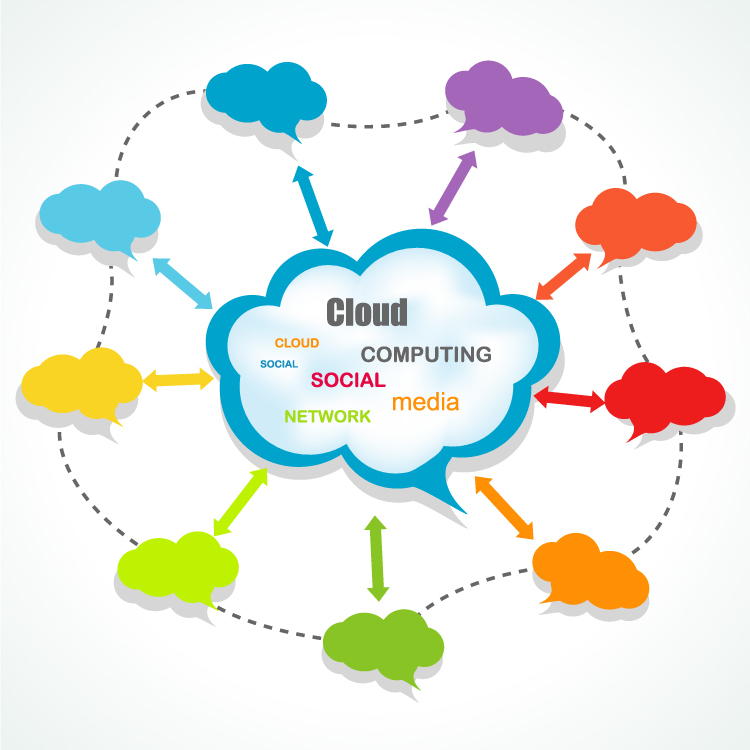The job in marketing today is all about culling out insights from vast amounts of customer data, creating content-based engagement strategies, executing through the customers preferred channels, and ensuring a great customer experience leading to business growth. Marketing teams now have the AdTech and MarTech tools, customer data, budgets to invest in technology and organizational support to lead this initiative. I have always believed that in today’s tech-enabled world the CMO can be in the driver’s seat. They can remodel or recast product and service offerings, deliver superlative customer experience and create new revenue streams.
In this context the ‘marketing cloud’ has gained significant traction in the last few years. So, what exactly is a marketing cloud? A marketing cloud is a suite of cloud-based marketing tools covering analytics, targeting, social media management, audience and campaign management and customer experience management. It can track and measure customer data, monitor individual users and automate mundane and repeat tasks.
As we know from experience, these investment decisions are difficult to make. Marketers understand the value of the marketing cloud but getting it up and running is not easy. Do we choose an ‘integrated’, ‘hybrid’ or a ‘modular’ marketing cloud? The answer to this very difficult question is do what is right for your business KPIs.
We now live in a convenience and experience economy. Brands are trying to tell a consistent story across all channels, coordinate the total digital experience, manage campaigns, and organize these thoughts so your business delivers a unified and a customized communication. There is a need for a platform for effective management and organization of the multiple facets of a marketing strategy and overall business plan. Marketing clouds can play an important role in enabling this.
Some of the key areas in which a marketing cloud helps are:
Customer Experience: Enabling a continuous and personalized conversation with customers, most of which is automated. A marketing cloud should support and optimize the entire customer journey.
Customer Single View: Help you view the entire customer information including identity, contacts, transactions and interactions across channels. It must also consolidate this data, real-time at one easily accessible place.
Digital experience: Manage web and mobile experience, paid media activation including demand-side platforms, such as video, search, social, DMPs, etc.
Orchestration and Omnichannel Campaign Management: Manage and coordinate all the necessary components of campaign management. One-on-one communication, targeting to a well-defined audience, designing and executing multichannel marketing campaigns.
Marketing and Customer Analytics: The marketing cloud will enable calculation and increase in marketing ROI, assist in making real-time data-based decisions, anticipate and monitor interactions and outcomes. All of this made easy to ingest and interpret with data visualization tools.

here was a time when people believed that the marketing cloud is a marketing and branding gimmick unleashed by the three tech giants – Adobe, Microsoft and Oracle. We must also understand that the so-called integrated stacks from these players is a mish mash of acquisitions made. Advances in digital marketing and adtech were primarily driven by start-ups. Through sheer financial muscle power, the big guys have splurged billions of dollars in acquiring various start-ups to enable them to create a holistic suite of products and platforms. Way back in 2009, Adobe bought Omniture for $1.8 billion and has made at least seven more acquisitions after that. Not to forget their partnership with Microsoft. Adobe states that its Experience Platform will incorporate data ingestion, customer profiles, analytics, and triggering capabilities as a foundation for its marketing, experience, analytics, and ad products. In 2011, Salesforce bought Radian6, followed by Buddy Media and ExactTarget. Oracle too was not far behind splurging more than $6 Bn on acquiring more than nine companies in this space. Add to this the other cross channel management or independent platforms like Cheetah Digital, Emarsys, Episerver, Evergage, Iterable, Mapp, Optimove, Sailthru, and Selligent Marketing Cloud. All of this is leading to an interesting scenario.
Another important factor to consider here are the Customer Data Platforms. So, what happens to them? The CDPs’ biggest threat is the marketing cloud. With Adobe, Oracle, and Salesforce leading the way, they are already integrated in most martech stacks and are investing in capabilities which are far more sophisticated than CDPs. We at Hansa Cequity are watching this space closely and advise clients on making informed decisions in a fast-evolving adtech and martech landscape.

